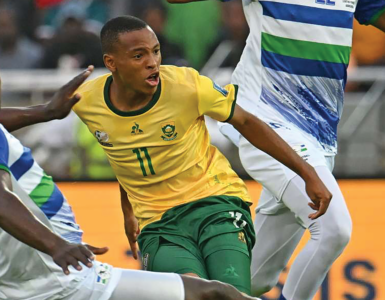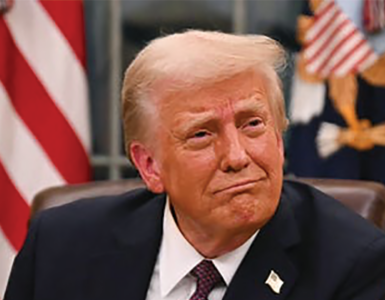ABORTED: Decision to terminate the mission taken during the virtual summit of 16-member Southern African Development Community yesterday…
By Own Correspondent
Southern African leaders have announced they will pull their troops out of eastern Democratic Republic of Congo where they have been helping the government fight rebel forces.
The troops were sent two years ago to support the Congolese army fight the Rwandan-backed M23 rebels, which has seized control of large parts of mineral-rich eastern DR Congo this year. At least 19 soldiers from South Africa, Malawi and Tanzania were killed when the M23 captured the region’s biggest city, Goma, in January.
Thousands of people have been killed during the fighting and hundreds of thousands left without shelter after fleeing their homes. There have been concerns the fighting could escalate to a wider regional conflict.
The M23 has continued to gain ground in eastern DR Congo and last month seized the region’s second-biggest city, Bukavu. South Africa’s deployment was heavily criticised by the public and opposition following the killing of its soldiers. Announcing the withdrawal, South Africa’s President Cyril Ramaphosa said that the “situation is precarious, but the peace as it is now is holding”.
However, the M23 has continued to seize more territory this week. Sandile Swanda, a South African political analyst, told the BBC it was an “embarrassing” situation for her country. “The rebels are very strong.
This is a full-on war and South Africa is hardly ready for any such war,” he said.
He added: “No country in the SADC region is ready for this war – psychologically, militarily and politically.” But the withdrawal is not just a setback for South Africa, it is a blow to both SADC and the DR Congo, analysts say.
Stephanie Wolters, a senior research fellow at the South African Institute of International Affairs, told the BBC that SADC’s withdrawal weakens Kinshasa’s position.
“They [SADC] have gone from being on Kinshasa’s side to being at best in a neutral position,” she said. In February, Malawi’s president said its troops would be withdrawn from DR Congo, although he did not give a reason. What is the fighting in DR Congo all about?
The decision to start a “phased withdrawal” from DR Congo was made during a virtual summit of the 16-member Southern African Development Community (SADC) in Zimbabwe’s capital, Harare, on Thursday.
No reason was given.
The SADC leaders said that even though the troops would be withdrawn from DR Congo, the bloc would continue to “support interventions aimed at bringing lasting peace”. SADC also called for a diplomatic and political solution to the conflict. Previous efforts to bring peace to DR Congo have not been successful. But Angola has announced this week that it will host peace talks between DR Congo and the M23 next week in the capital, Luanda. The M23 said they “welcomed” this move.
DR Congo’s President Félix Tshisekedi has previously refused to engage in direct negotiations with the group, insisting on only talking to Rwanda.
This was SADC’s third emergency summit on DR Congo in recent months. It is unclear how many SADC troops are in DR Congo, but 5,000 troops were due to be sent.
South Africa, which leads the mission, was to deploy 2,900 troops and the rest shared between Malawi and Tanzania.- BBC
Meanwhile, in parts of the Democratic Republic of the Congo (DRC), communities are gearing up for war or fleeing to safety amid the advance of M23 rebels, who captured the key eastern cities of Goma and Bukavu in recent weeks, leaving devastation in their wake, reports Al Jazeera .
The rebel group, which the United Nations says is backed by neighbouring Rwanda, has also closed in on Walikale, a major mining hub, while Kinshasa’s offer of a R91m reward for the capture of M23 leaders has not slowed the group down.
While M23 marches on in North and South Kivu, Ugandan troops have intensified deployments across their border with the DRC in Ituri province, only a few hours from the rebel-held regions.
The Ugandan army says it is battling the Allied Democratic Forces (ADF) and the Cooperative for the Development of Congo (CODECO) – two of several dozen armed groups operating in the DRC. A recent flare-up of CODECO attacks on civilians in February saw at least 51 people killed, prompting Uganda to send additional soldiers to boost its 5 000-strong deployment inside the DRC.
For political observers, the growing presence of both Rwandan and Ugandan soldiers in the DRC is an eerie replay of a painful past, one they fear could again lead to a bigger, regional war if not contained.
“We are indeed seeing a replica of the Second Congo War with the same actors but in slightly different configurations,” analyst Paul Nantulya of the Africa Center for Strategic Studies told Al Jazeera, referring to the leading roles both countries played in what’s now referred to as the 1998 “Great Africa War” when Rwandan and Ugandan troops invaded the DRC.
Several African countries also followed suit, backing either the DRC or the Rwandan-led side, as well as dozens of local militias on either end. The result was a humanitarian crisis that saw an estimated five million deaths; the DRC looted of mineral resources like gold; and the emergence of dozens of armed groups, including the M23.
At the time, thousands across the globe protested against the atrocities in the DRC, calling for an end to the looting and killings. Today, illegal mining and smuggling from the DRC’s mines – which provide 70 percent of the global supply of coltan and cobalt that powers electronics – have largely continued, as have deaths and displacements due to armed group activity.
“Appetite for political negotiations is low and international pressure and coercive measures have not had the deterrent effect they once had in previous bouts of crisis,” Nantulya added, referencing the European Union’s suspension of military aid support to Rwanda, and United States sanctions on key Rwandan army officials.
The DRC has been in the throes of low-level violent conflict for more than three decades. In that time, more than six million people have been killed, and millions more displaced.
A complex mix of issues is to blame, among them: grievances by Kigali that the DRC harbours anti-Rwanda rebels who fled after the Hutu genocide against the Tutsis in 1994; ethnic tensions between Congolese Tutsis and their neighbours; a grab for mineral resources in insecure eastern DRC; and corruption in the Congolese government. – Additional reporting by Al Jazeera






